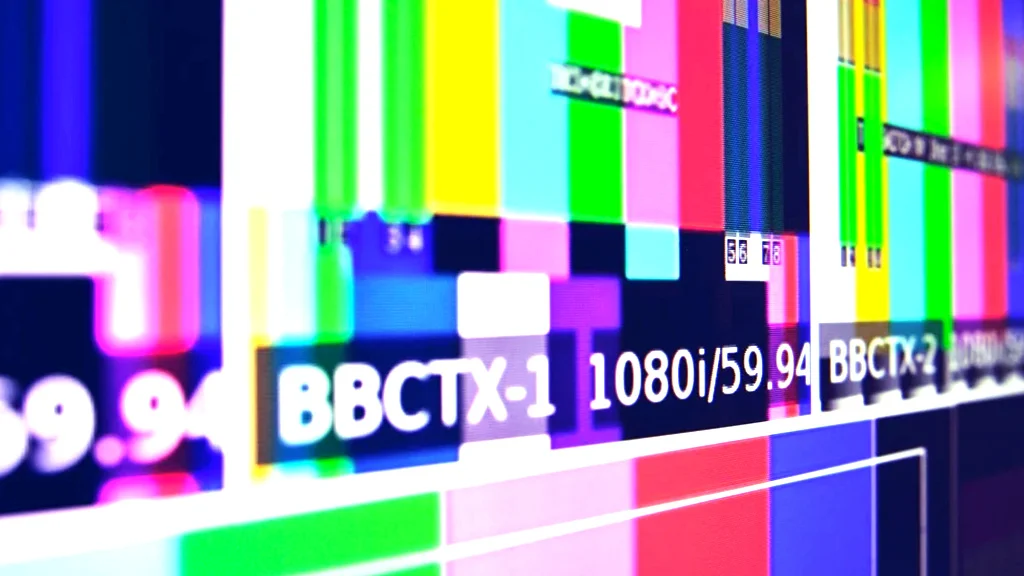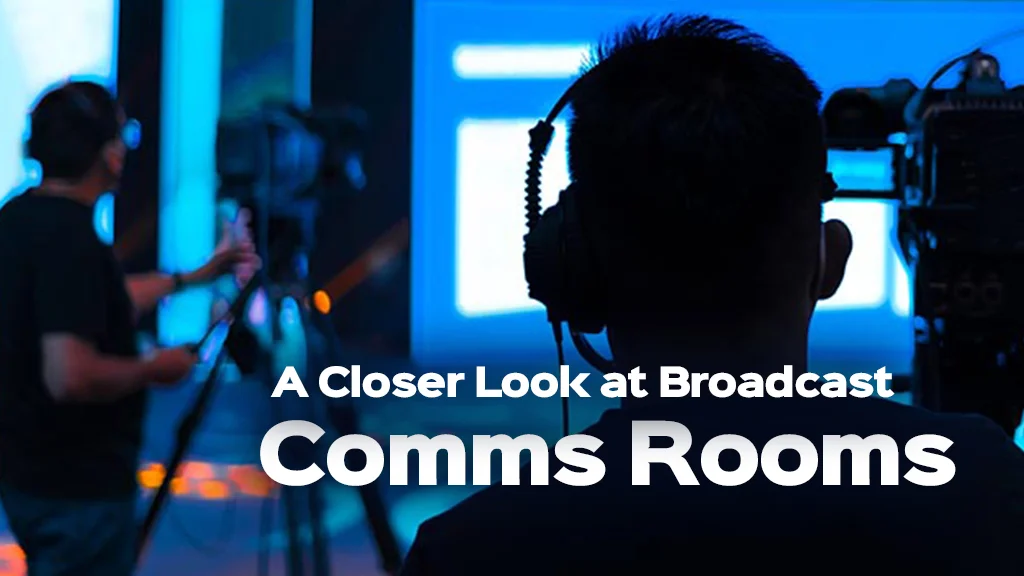
- Academy
What is Digital Video Broadcasting (DVB)
Digital video broadcasting (DVB) is a set of international open standards for digital television transmission over satellite (DVB-S), cable (DVB-C), and terrestrial (DVB-T) networks. DVB was initially developed in the early 1990s by the DVB Project, which is an industry-led consortium of broadcasters, network operators, and manufacturers.
The key aspects of DVB include:
Digital Transmission: DVB uses digital transmission rather than analog, allowing for more efficient use of bandwidth and better picture and audio quality.
Open Standards: this product is based on open standards, which are publicly available and allow for interoperability between different manufacturers’ equipment.
Flexibility: Digital video broadcasting supports a variety of video and audio compression technologies, as well as various transmission modes to suit different network environments and requirements.
Global Adoption: this standards have been widely adopted around the world, with over a billion DVB receivers in use globally. Major regions using Digital Video Broadcasting include Europe, parts of Asia, Africa, and Australasia.
Types of digital video broadcasting
Digital Video Broadcasting standards cover various distribution methods, including:
Satellite:
DVB-S: Used for satellite broadcasting, employing modulation schemes like QPSK, 8-PSK, or 16-QAM.
DVB-S2: An enhanced version of DVB-S, supporting QPSK, 8-PSK, 16-APSK, or 32-APSK modulation.
DVB-SH: Designed for hybrid satellite/terrestrial broadcasting.
Cable:
DVB-C: Used for cable television, employing QAM modulation (e.g., 16-QAM, 64-QAM).
DVB-C2: An improved version of DVB-C.
Terrestrial Television:
DVB-T: Used for terrestrial broadcasting, combining OFDM with 16-QAM or 64-QAM (or QPSK).
DVB-T2: A more robust standard for TV reception, offering increased bit rates.
Digital Terrestrial Television for Handhelds:
DVB-H: Temporally-compressed distribution to mobile devices.
DVB-IPTV
DVB-IPTV is the set of standards and technologies that enable the delivery of digital television services over IP networks, such as the internet or private IP networks.
DVB has played a major role in the global transition from analog to digital television, providing a flexible and interoperable framework for broadcasters and network operators worldwide.
Digital video broadcasting terrestrial
Digital Video Broadcasting Terrestrial (DVB-T) is a standard for the transmission of digital television signals over terrestrial broadcast channels. It was first introduced in the late 1990s as a replacement for traditional analog television broadcasting.
Some key things to know about DVB-T :
It uses MPEG-2 or MPEG-4 video compression and OFDM modulation to efficiently transmit digital TV signals over the airwaves.
Compared to analog TV, DVB-T allows for higher quality video, more channels, and interactive services in the same amount of broadcast spectrum.
It was initially deployed across Europe in the early 2000s as countries transitioned from analog to digital TV. Many other regions around the world have also adopted DVB-T standards.
DVB-T2 was introduced in 2008 as an improved version offering higher bit rates, increased robustness, and support for HDTV.
The switch from analog to digital TV broadcasting , known as the digital dividend, freed up valuable spectrum that could then be used for other wireless services like mobile broadband.
Challenges with DVB-T have included the need for receiver upgrades, coverage issues in some areas, and competition from other digital TV standards like ATSC.

How digital video broadcasting works
Let’s dive a bit deeper into how digital video broadcasting (DVB) works:
The key components of a DVB system are:
Content Encoding:
Video and audio signals are digitized and compressed using MPEG-2 or MPEG-4 codecs.
Additional data services like subtitles, EPG, etc. are also encoded.
Multiplexing:
The encoded audio, video, and data streams are combined into a single transport stream. This allows multiple TV channels and services to be transmitted simultaneously.
Modulation:
The transport stream is then modulated onto a radio frequency carrier signal. this product uses OFDM (Orthogonal Frequency Division Multiplexing) modulation, which is efficient for terrestrial broadcast.
Transmission:
The modulated signal is transmitted from a broadcast tower over the air. DVB-T uses UHF and VHF frequency bands for terrestrial transmission.
Reception:
A DVB receiver (e.g. set-top box, TV tuner) picks up the broadcast signal. It demodulates the signal, de-multiplexes the transport stream using a dvb multiplexer and decodes the individual audio/video/data services. The content is then displayed on the user’s TV or device.
Some key features of Digital video broadcasting systems:
Forward error correction and interleaving provide robust transmission against channel impairments.
Electronic program guides (EPGs) provide users with TV schedule information.
Conditional access systems enable paid/subscription services.
The transition from analog to digital TV broadcasting using standards like DVB has enabled more efficient use of spectrum, improved picture/sound quality, and new interactive services.
Benefits of Digital video broadcasting
Let’s discuss the key benefits that digital video broadcasting (DVB) systems provide compared to traditional analog television broadcasting:
- Improved video and audio quality:
DVB uses digital encoding and compression, allowing for much higher quality video (up to HDTV) and audio compared to analog.
The digital transmission is less susceptible to interference and signal degradation. - Efficient use of spectrum:
By using digital modulation and multiplexing, DVB can pack more channels and services into the same amount of broadcast spectrum. This “digital dividend” freed up valuable wireless spectrum that could then be repurposed for other uses like mobile broadband. - Interactivity and advanced services:
DVB supports the delivery of interactive applications, electronic program guides, subtitles, and other enhanced content. This enables new revenue opportunities for broadcasters and more engaging experiences for viewers. - Flexibility and scalability:
The modular DVB standards allow for different configurations and profiles to be deployed, tailored to regional needs. New capabilities like HDTV, 3DTV, and Ultra HD can be supported as the standards evolve. - Cost savings:
Once the initial infrastructure is in place, the operational costs of digital broadcasting are generally lower than analog.
Maintenance and energy consumption are also reduced. - Universal access:
With the transition to digital TV, access can be extended to previously underserved areas through the use of gap-fillers and repeaters. This helps ensure universal access to television services.
Overall, the switch to DVB has been transformative for the television industry, enabling higher quality, more efficient, and more capable broadcast services. The benefits have made it the dominant global standard for digital terrestrial television.
Read also :
Digital video broadcasting and security
Security is an important consideration when it comes to digital video broadcasting (DVB) systems. There are several security-related aspects to DVB:
Conditional Access:
this product supports conditional access systems that allow broadcasters to encrypt and control access to their content.
This enables pay-tv and subscription-based business models by preventing unauthorized viewing.
The encryption and access control mechanisms need to be robust to prevent piracy.
Content Protection:
DVB has built-in content protection features to prevent unauthorized copying or redistribution of broadcast content. This includes copy protection mechanisms and digital rights management (DRM) systems.
Channel Security:
The distribution of Digital video broadcasting signals over terrestrial, satellite, or cable channels needs to be secured against tampering or intrusion. Measures like encryption, access controls, etc. are used to protect the live tv production .
Receiver Security:
DVB receiver devices (set-top boxes, integrated tuners) need secure firmware and tamper-resistant hardware to prevent hacking.
This is important to maintain the integrity of the conditional access and content protection systems.
Standards-based Security:
The DVB standards define security requirements and guidelines that must be followed by implementers. This helps ensure a baseline level of security across different DVB deployments.
Ongoing Security Updates:
As new threats emerge, the this standards and security mechanisms need to be updated and improved over time. Broadcasters and device manufacturers must keep their systems up-to-date to defend against evolving security risks.
Overall, security is a critical consideration for Digital video broadcasting , as the technology underpins valuable broadcast services and content. Robust security measures help protect the business models and intellectual property of broadcasters, while also safeguarding the viewing experience for consumers.
Future Trends in Digital Broadcasting
As digital video broadcasting (DVB) technology continues to evolve, there are several key future trends that we can expect to see:
Transition to IP-based Broadcasting:
There is a growing shift towards IP-based distribution of broadcast content, leveraging internet protocols and broadband networks. This enables greater flexibility, interactivity, and convergence with OTT (over-the-top) video services.
Standards like DVB-I are being developed to facilitate this IP-centric transition.
Ultra HD and Higher Resolution Video:
The continued adoption of 4K, 8K and 16K video will drive the need for more advanced video codecs and higher bandwidth.
Future iterations of the DVB standards will likely focus on supporting these higher resolutions and frame rates.
Immersive and Interactive Experiences:
Emerging technologies like virtual reality (VR), augmented reality (AR), and 360-degree video will enable more immersive viewing experiences. DVB standards will need to accommodate the delivery and synchronization of these formats. Increased interactivity, personalization, and viewer engagement will also be a focus.
Hybrid Broadcast-Broadband Services:
The combination of broadcast TV and internet-delivered content will become more prominent. Hybrid broadcast-broadband systems will leverage the strengths of both delivery mechanisms to provide a seamless user experience.
This will enable advanced features like catch-up TV, start-over, and multi-screen viewing.
Internet of Things (IoT) Integration:
As the connected home and IoT ecosystems evolve, DVB will need to integrate with and support a wider range of smart devices and home automation systems.
This could enable new applications like voice control, content recommendations, and remote device management.
Increased Focus on Security and Privacy:
With the growth of IP-based delivery and connected devices, security and privacy will be critical focus areas for future DVB developments. Advanced content protection, anti-piracy measures, and user privacy safeguards will be essential.
Overall, the future of digital broadcasting will be marked by increased convergence, immersion, and intelligence, all while maintaining robust security and privacy controls. The DVB standards will continue to evolve to address these emerging trends and user demands.









